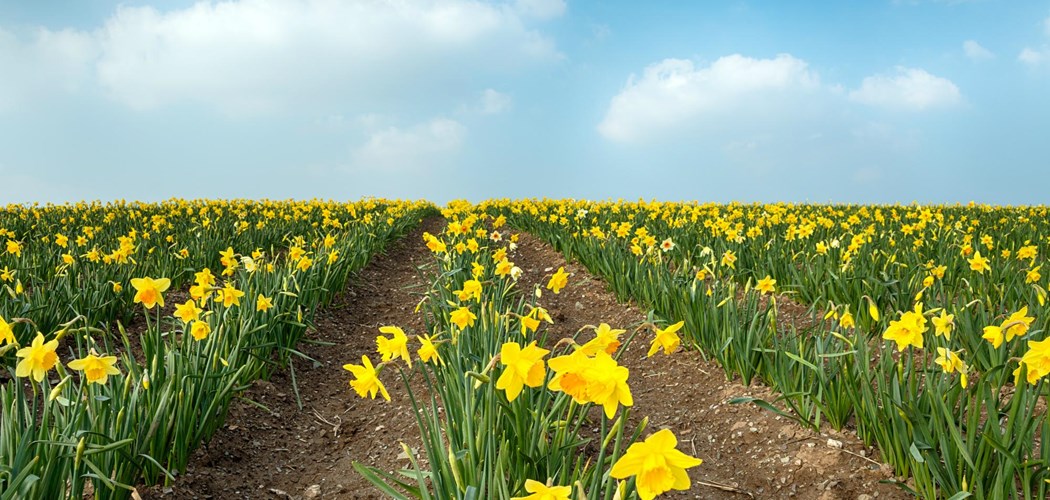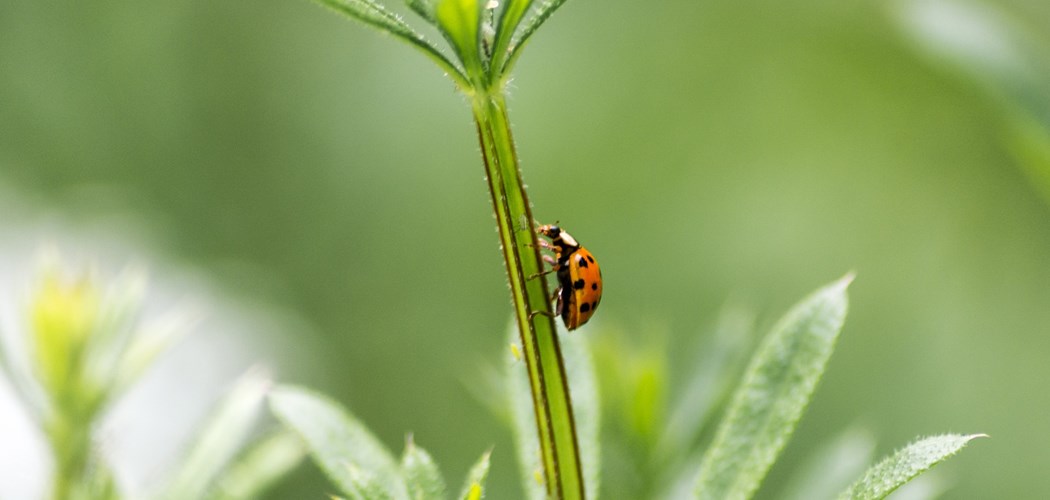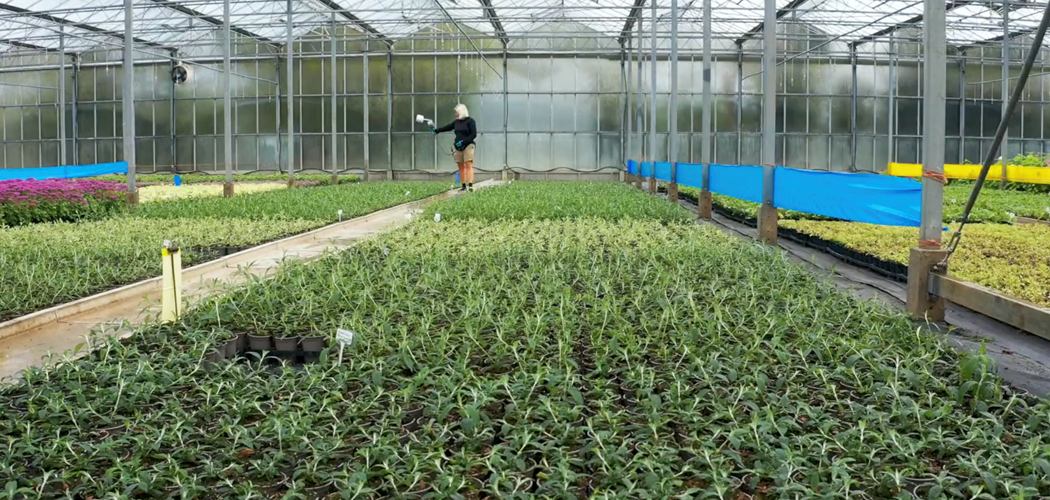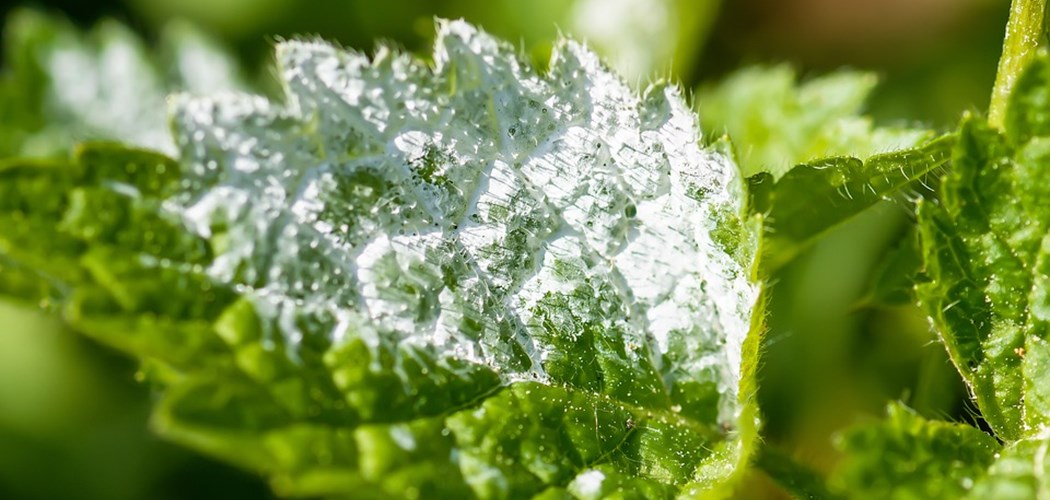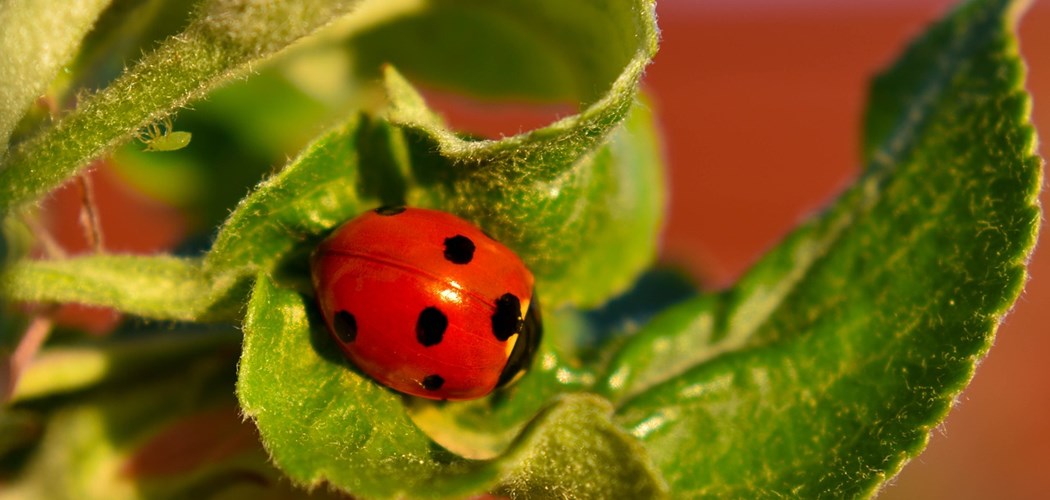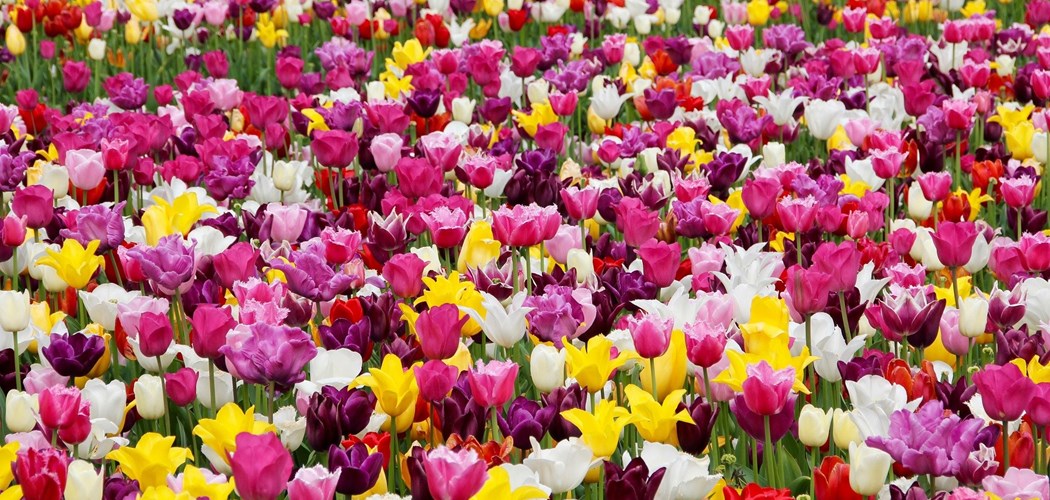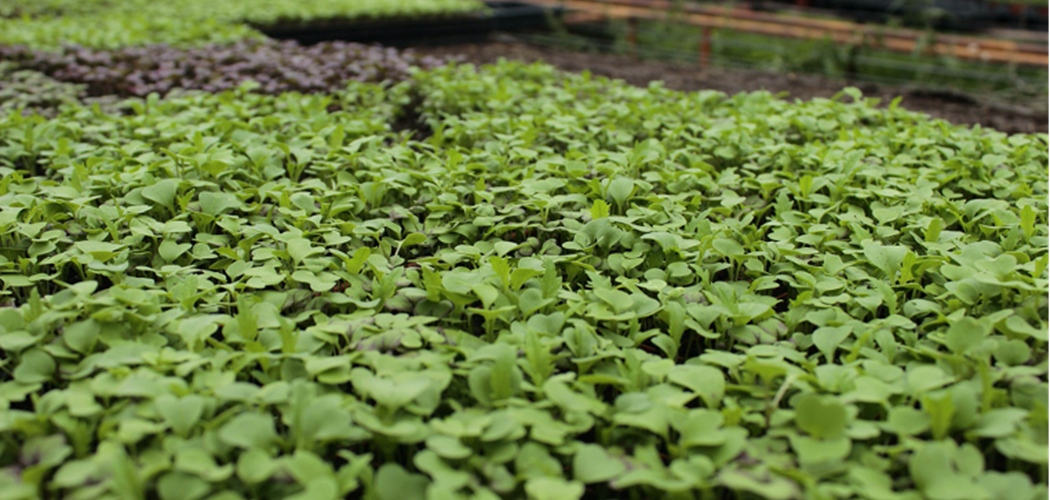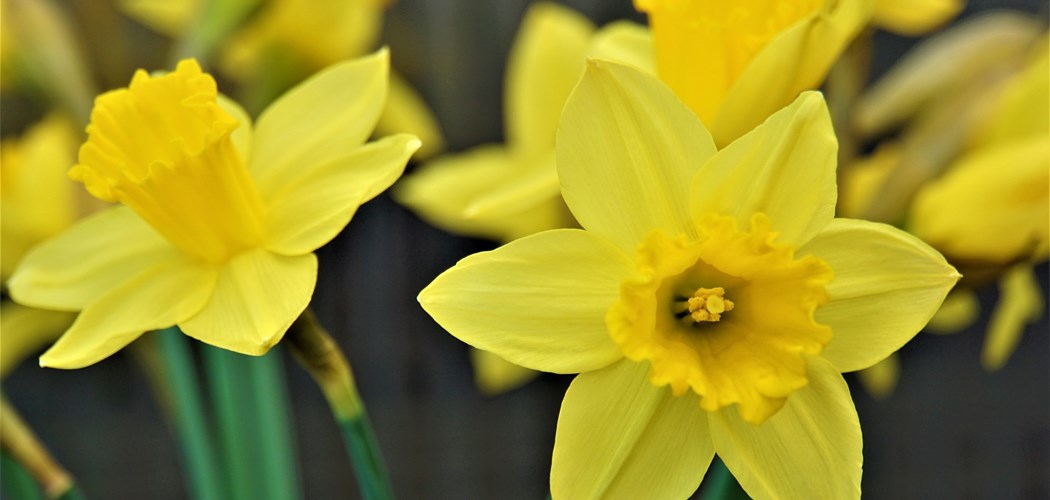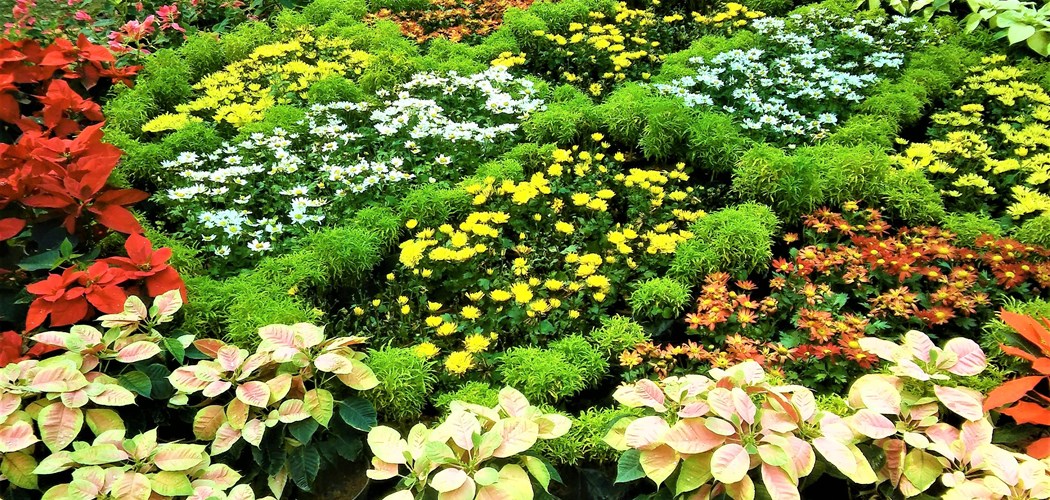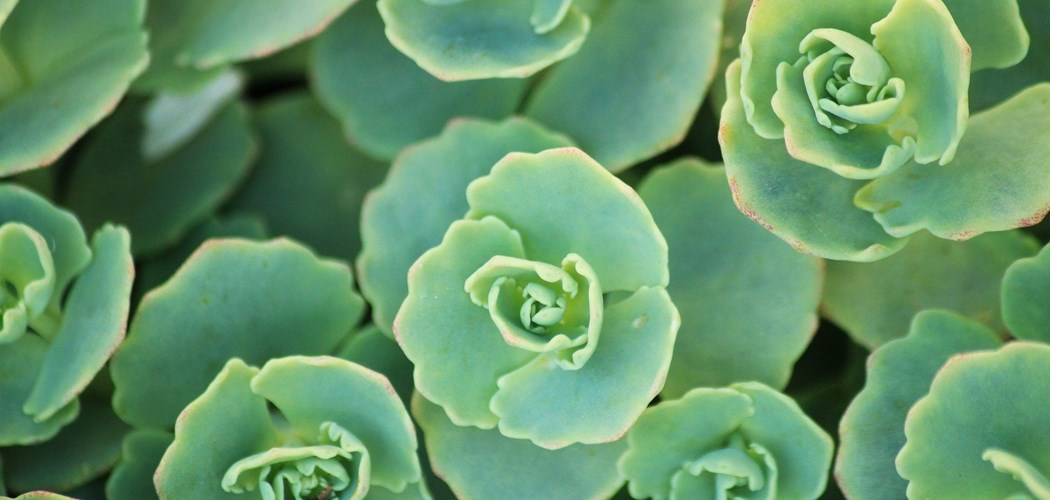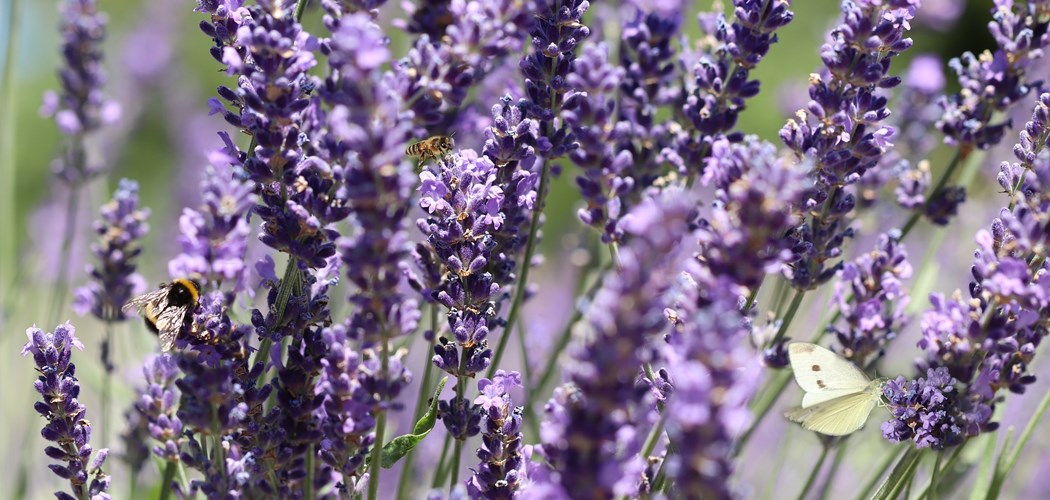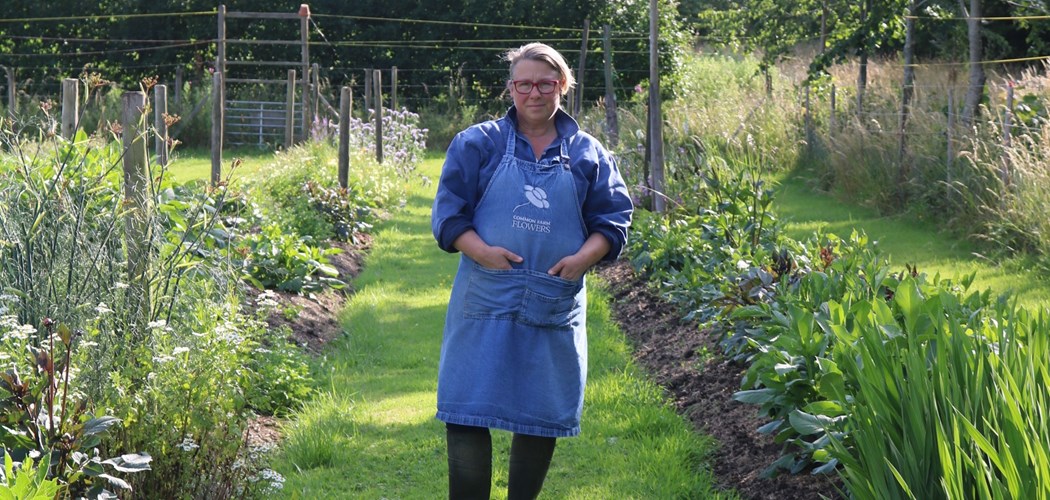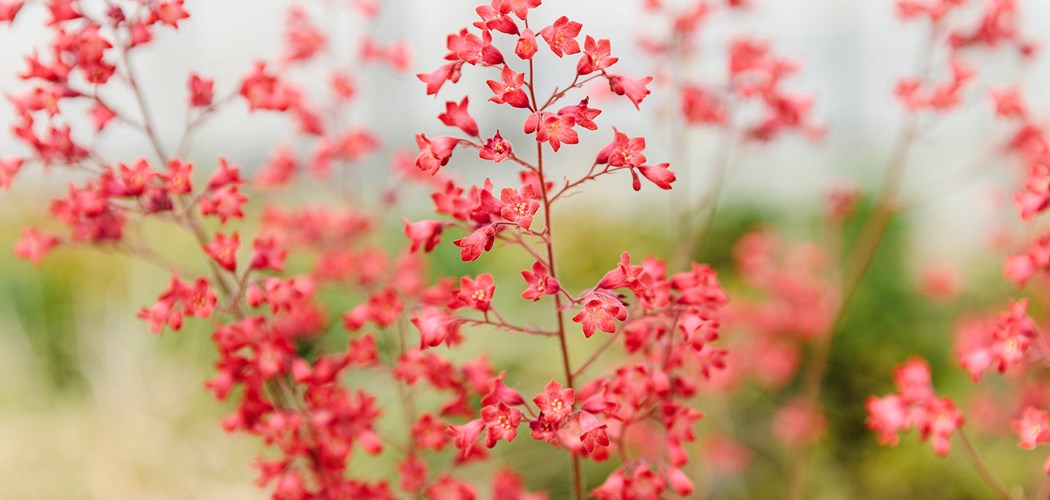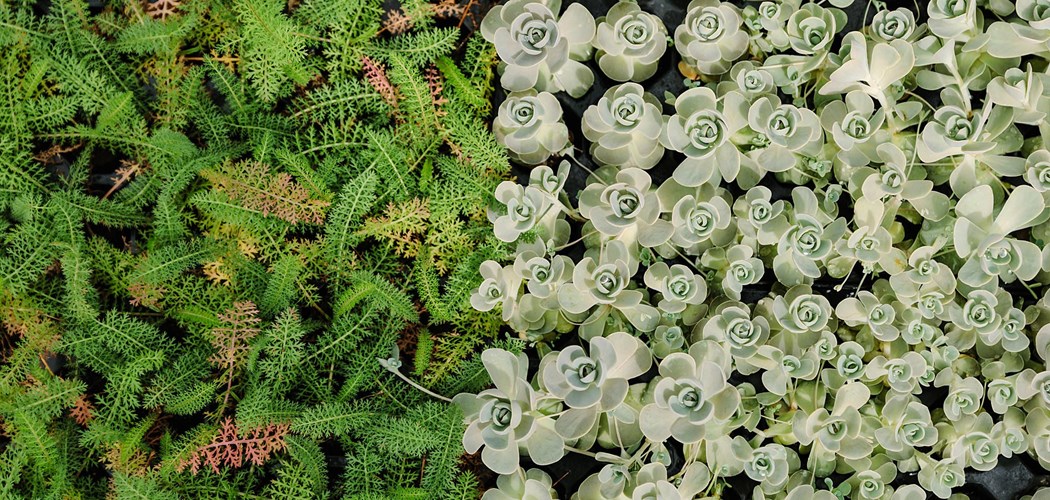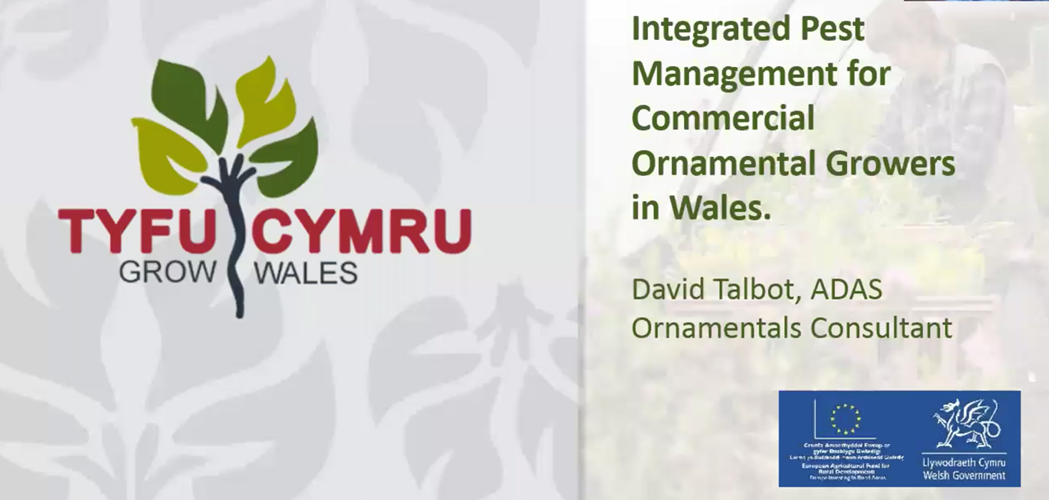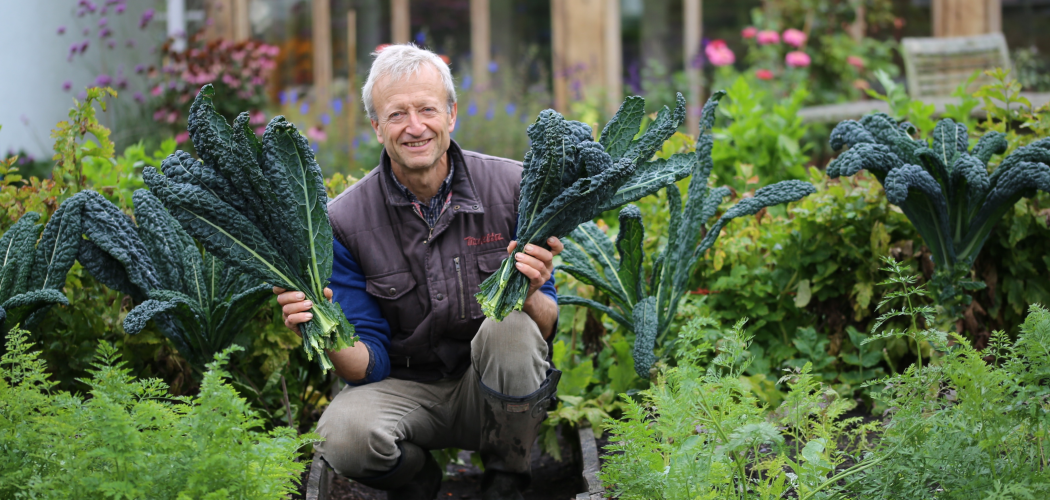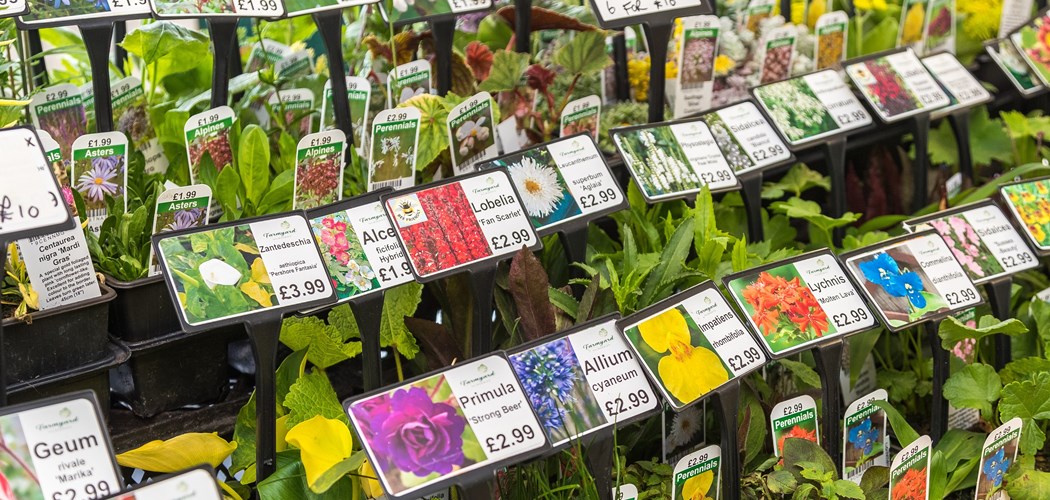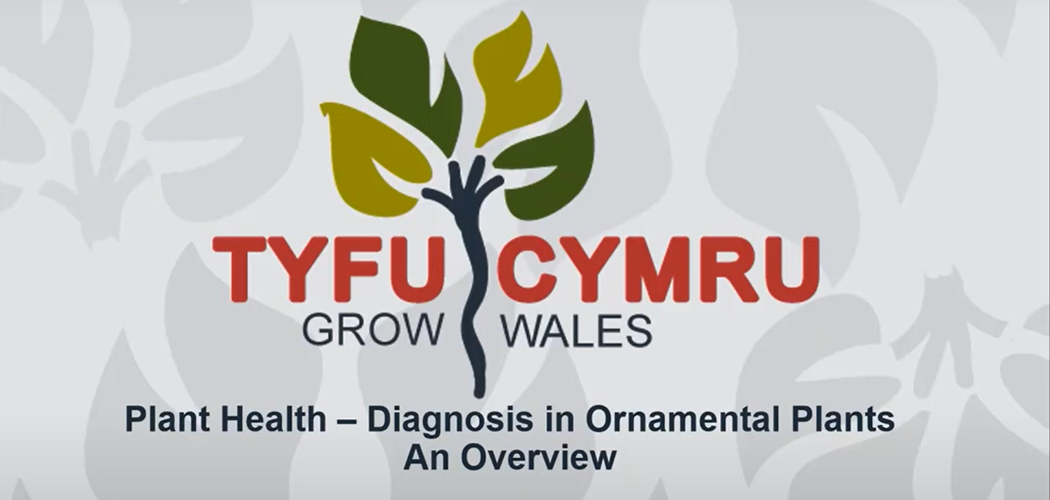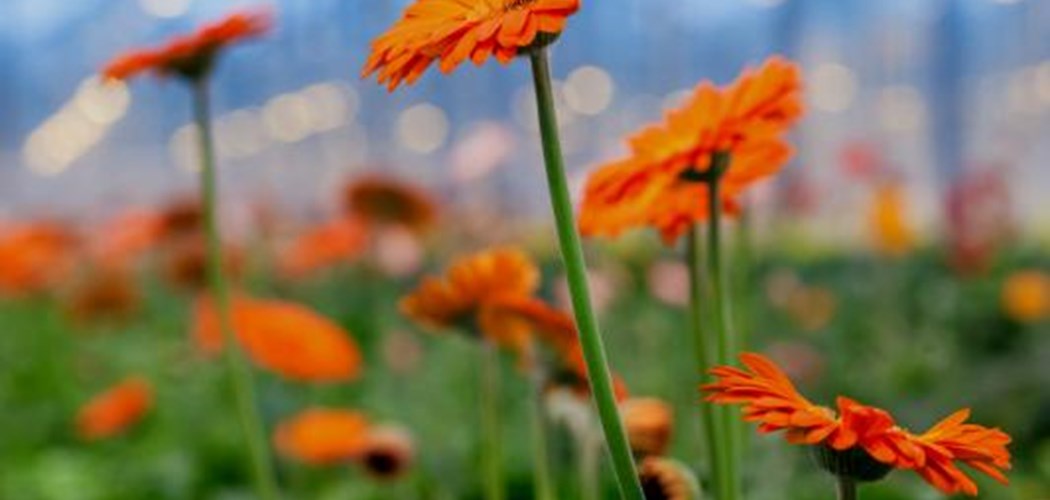Technical Advice Sheet: Ornamental Plant Protection

Download the Toolkit: Plant Protection in Ornamentals v2 - English.pdf
Cultural Control – Prevention is Better Than Cure
Effective pest and disease control should always begin with cultural controls, and you should plan all your crop management activities on site with pest and disease control in mind. A Dry Regime can be a strong foundation, and can help to limit the impacts of foliar diseases such as Botrytis alongside root diseases like Pythium and Phytophthora. In planning your activities to keep the crop as dry as possible you could consider the following:
- Minimise periods of leaf wetness – planning irrigation for the early morning rather than the late afternoon to help the crop dry out. This can be particularly useful to help prevent foliar diseases such as downy mildew in susceptible crops like Hebe.
- When irrigating less frequently in the winter match irrigation with weather forecasts and apply on bright, sunny days.
- In protected crops maximise ventilation to aid leaf drying and blow through to help disperse humid, stale air. Keep vents and doors open as much as possible unless there is a risk of frost. On days where there is a frost risk open these as soon as temperatures rise above a damaging level to disperse humid air.
- A range of fans are available for use in tunnels, and suppliers can provide advice on placement to avoid pockets of dead air. Consider systems that include humidistats that will switch on if humidity gets above a set threshold.
- Anti-condensation products like Anticondens are available for use on the inner surface of tunnels or glass to prevent and disperse condensation to prevent drips falling onto the crop – be careful with their use as there are similar but different products for different surfaces e.g. glass and polythene.
- Make sure irrigation tanks are covered to limit evaporation, but this will also stop leaves and other sources of disease blowing into water tanks. Covers also prevent leaves and algae from accumulating in the tank.
Weed Control can also be an important approach, both from controlling humidity within crops as well as removing reservoirs of pest and disease problems. You should aim to prevent weeds from setting seed to limit escalation. Weekly hand weeding on a careful rotation has proven to be more labour effective than a heavy handed sporadic approach and is a lot more likely to prevent weeds establishing.
Bioprotectants
Bioprotectants (formerly known as biopesticides) are separate from biological controls such as insect predators that you may release into your crop. These are typically microbial agents that are sprayed onto the leaf surface and act to combat plant pathogens by outcompeting or inhibiting their growth, such as feeding on leaf exudates. This means they must be carefully applied to the crop in advance of any problems in such a way that they can become established over the canopy.
These are generally applied as a spray onto the foliage with conventional chemical spray equipment. However, it is best to have a separate dedicated sprayer for bioprotectants as it can be difficult to fully clean out chemical tanks to prevent carry over which can adversely affect the bioprotectants. For smaller businesses where a separate sprayer is not feasible make sure you run a tank cleaner through sprayers to reduce residues as much as possible and clean spray tanks between different products.
Spores will be applied in a dormant stage over the crop, and so may require careful handling and storage before application. For example, Prestop which can be used as a foliar spray for Botrytis control or as a root drench for Phytopthora or Pythium will need to be stored below 4°C – preferential in a dedicated fridge where the temperature is recorded. For partially used packs keep in an air tight container to prevent degradation in storage and use desiccant packages if possible. Bioprotectants will have minimum or optimum colonization temperatures that should be considered when planning applications – for example Serenade ASO (which can be used under EAMU) can be active below 15°C but will be most active between 25 – 35°C.
Biological control predators and bioprotectants can continue to work in the retail environment to reduce wastage after sale. These approaches will address customer concerns regarding pesticide usage and residues, whilst being safe for you and your staff.
Conventional Control
Where other controls are insufficient (or are not available) chemical solutions may be the best alternative. Boom sprayers deliver the best spray coverage and so best results will be achieved if you can apply the products in this way, even if using small hand held booms. Some growers have developed innovative systems, such as lances with multiple nozzles to replicate this on the small scale. Reaper spray pistols can result in uneven application with patches under- or over-sprayed leading to patchy control or uneven growth regulator effects. Spray nozzles should also be carefully calibrated. A 110° flat fan nozzle can be a good all-round choice (these spray nozzles should be 50cm above the spray target) but manufacturers will give the BCPC nozzle classification (fine / medium / coarse) for their spray nozzles. Fine nozzles will give smaller droplets but are more likely to result in drift. Fungicides and insecticides are best applied with a nozzle delivering a medium spray quality, whilst herbicides should be applied with a coarse nozzle to minimise drift. Products are generally applied in dilutions of 200 – 400 L/Ha water, but check labels and EAMUs for specific requirements.
Planning Control Options
Cultural controls can be used all year round, and should be the starting point for any crop management decisions. For example, Pythium root rot in conifer can be greatly mitigated by keeping the crop on the dry side to help to reduce disease development. Look out for symptoms in your crops and remove affected plants promptly to reduce the risk of water-borne spore transmission. If you catch the disease early it can be a better approach to create favourable conditions for the crop rather than the pathogen – dry the crop back, remove infected plants and prevent transmission – and you may avoid the need for a fungicide drench. Effective control will also reduce the need for extra inputs, so minimising disease pressure can be of wider benefit.
Bioprotectants (including biological controls) can be used between April and October for most problems, although watch out for any temperature requirements. Likewise, look to match biological predators with conditions. For example, aphid predators will be in active at low temperatures and will be most effective around 16 – 20°C. Introduced flying predators are unlikely to be effective outside, but predatory mite control can be useful outside once you learn to work with the conditions. Consider conventional control options when pest or disease pressure is high, and a level of control not available with biologicals is required, particularly when conditions are favorable for rapid development.
Use cultural controls – prevention is better than cure, save costs, labour and crop inputs, minimise disease pressure, prevent problems like fungicide resistance developing as there are limited chemical control options for some diseases. Retaining chemical control options for when they are really needed can help to reduce the risk of resistance development – always be sure to use a combination of FRAC codes when planning your control schedule – your agronomist can help you develop a suitable program. Conventional controls can also be useful for clean up at the end of the season, or as a knockdown to deal with outbreaks to allow biological control options to re-establish.
Disclaimer
Every effort is made to ensure the accuracy of information and recommendations given in these notes. All applications of crop protection chemicals should be made in accordance with label recommendations, which should be consulted before spraying. Some of the pesticides mentioned in these notes may not be supported by label recommendations for their use on crops but are permissible via Extension of Authorisation for Minor Use (EAMU) in the UK under ‘The Revised Long Term Arrangements For Extension Of Use (2002)’. In these cases, the use of the pesticide is at the risk of the user and Tyfu Cymru does not accept liability for any loss or damage caused by such use. The references to on-label approvals and EAMUs for use of pesticides in crops and are correct at the time of writing. These are subject to change and approval may be withdrawn at any point. It is the grower's responsibility to check approvals before use of pesticides. If in doubt a grower should seek advice from a BASIS qualified advisor - this is available free of charge for eligible growers through the Tyfu Cymru program, please contact us to arrange an appointment – email/telephone advice is also available.
Related Pages
Tyfu Cymru Ornamentals network 2022 Spray Programme for disease prevention and control
This spray programme has been written for ornamental crops, products included within it can legally be used in both the production of outdoor and protected ornamentals.
5/26/2022 3:37:47 PMWebinar: IPDM Review of the Season - Ornamentals
An opportunity to review progress with an integrated approach to pest and disease management, hearing from the group on success and challenges.
1/21/2022 4:39:52 PMWebinar: IPDM Ornamental Crops: April and early Spring pest management
Tyfu Cymru's Integrated Pest and Disease Management Network provides training on the recognition of pest, diseases and beneficial insects and will help growers to determine current pest and disease pressures and the need for their prevention and cont…
10/22/2021 2:35:16 PMWebinar: Limiting the impact of common Summer Pathogens
In the 4th session the Ornamental group lead by David Talbot we looked at limiting the impact of common Summer Pathogens and Vine Weevil.
6/18/2021 2:07:03 PMWebinar: IPDM Biological Controls - Ornamentals
The second session of the IPDM network focused on biological controls for the coming season with tips on which predators to introduce and when, plus rates of introduction for prevention and control of key pests within crops. Including tips on the IPM…
5/7/2021 4:04:24 PMTyfu Cymru Ornamentals network 2021 Spray Programme for disease prevention and control
This spray programme has been written for ornamental crops, products included within it can legally be used in both the production of outdoor and protected ornamentals.
3/31/2021 4:46:47 PMWebinar: Tyfu Cymru: Flower Network - Soil Health and how to unlock nutrients for flowers
Elizabeth Stockdale currently leads the Soil Biology and Soil Health Partnership funded by AHDB and BBRO. In this seminar she draws on the findings from a range of sectors to draw out key principles for flower growers; and also share some of the spec…
2/24/2021 1:24:32 PMWebinar: Propagation methods and systems for Ornamentals
Traditionally ornamentals producers used to propagate much of their own stock, however in recent years some growers have become plant finishers; buying in all of their young plant material. The bedding sector in particular has specialist young plant…
1/25/2021 3:37:38 PMWebinar - Daffodil Crop Protection
The webinar covers the latest updates and best practice for plant protection in field daffodil production, with particular focus on disease and weed control. This includes an update on the performance of new and existing herbicides for weed control i…
1/25/2021 3:19:10 PMTechnical Advice Sheet: Weed Control in Ornamentals
Your first line of defence against weeds should be cultural controls; no herbicide programmed will work effectively without good nursery hygiene
1/21/2021 3:58:48 PMSunflower Webinar
Tyfu Cymru hosted a webinar on sunflowers as there is currently a lot of interest in the crop both from farm tourism pick your own and the cut flower growers. This crop is relatively simple to grow and being a combinable crop has more options for wee…
12/14/2020 11:25:23 AMWebinar: Weed control in the production of ornamentals
Recent losses of contact herbicides and increased restrictions on the number of applications and rates of remaining residual herbicides has meant that achieving the desired levels of weed control within both field and container grown ornamental crops…
12/14/2020 10:45:49 AMTechnical Advice Sheet: Growing Lavender
Lavender can be a new and unusual crop that can be integrated into a range existing grower holdings, and it can even integrate well with other products such as honey if you have hives on site.
11/16/2020 11:29:37 AMWebinar: The Flower Farmer's Year
The Flower Farmer’s Year session looks at how Georgie Newbery - the flower farmer and florist who began Common Farm Flowers ten years ago, run their year. They grow about 250,00 stems a year for cutting, they are a retail business and have a very str…
11/13/2020 5:12:22 PMTyfu Cymru Webinar: Plant Protection in Ornamentals; How, When and Why?
Focusing on pesticide application, how best to apply product to get the best results, how to decide when to start spraying – helping you to decide if it is best to wait until problems occur or should preventative treatments be applied, why we are inc…
8/20/2020 4:20:31 PMWebinar: Plant Biosecurity
Plant Biosecurity in the Welsh Ornamental Plant Trade - An Overview from Dr David Skydmore. This webinar is one in a series of workshops and webinars comprising Tyfu Cymru’s Plant Health Programme.
8/18/2020 10:37:20 AMIntegrated Pest Management for Commercial Ornamental Growers in Wales
Webinar with David Talbot from ADAS on Integrated Pest Management for commercial ornamental growers in Wales.
6/29/2020 1:56:21 PMTyfu Cymru and Charles Dowding Q&A - Part 2: No Dig Methods and Advantages for Intensive Cropping
Charles Dowding joins us for a Q&A session with Welsh commercial growers following his walk through of No Dig Methods and Intensive Cropping in part one of the webinar series.
6/12/2020 5:04:55 PMTyfu Cymru and Charles Dowding Webinar Part 1: No Dig Methods and Advantages for Intensive Cropping
In the first part of this webinar Charles presents the benefits of no dig and intensive cropping with an online walk through of no dig growing covering all aspects from no dig polytunnels to planting, composting, multisowing and propagation.
6/12/2020 4:59:52 PMWelsh Ornamental Growers Immediate Experiences of and responses to COVID-19
This report presents findings from consultation with ornamental plant and cut flower growers in Wales regarding their immediate experiences of and responses to the Covid 19 (C19) crisis.
5/7/2020 10:59:27 AMDiagnosis in Ornamental Plants
In commercial horticulture, plant pests and diseases (P&D) lead to losses in production and subsequent sales losses. This webinar gives an introduction, for the grower, to some of the more common symptoms caused by pathogens and pests and those produ…
4/7/2020 5:25:47 PMPlant Health Webinar: Diagnosis in Ornamental Plants
Plant Health Webinar: Diagnosis in Ornamental Plants - an overview. Delivered by Dr David Skydmore
4/7/2020 5:14:22 PMSoilless Cultivation For Ornamentals
Growing plants without soil is a precise method to deliver water and nutrients to match crop demand; because of the enhanced availability of resource to the root-zone, crops can be grown at a higher density than would be possible in the field.
12/16/2019 1:46:44 PMGrown not Flown Flowers
The cut flower market can learn a lot from the way the food and drink industry has promoted provenance and local sourcing as a way to tap into the increasing consumer interest in understanding where our food has come from. And it isn’t a huge step fr…
12/16/2019 1:39:34 PM
